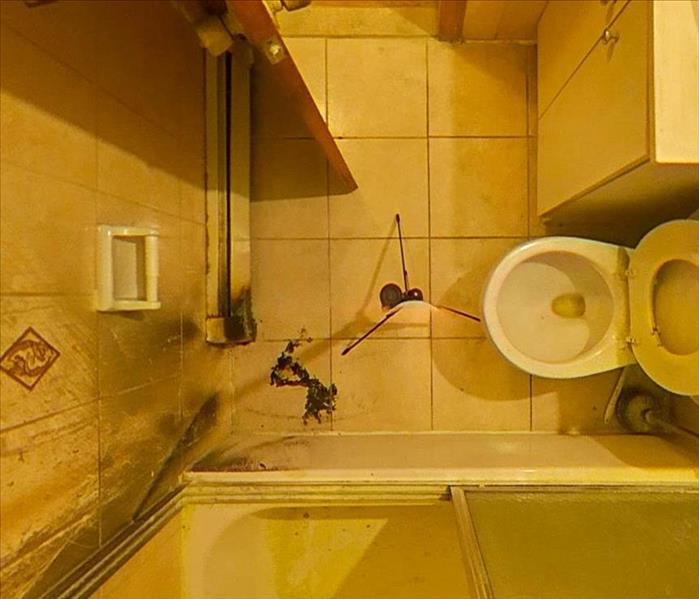Flood Damage vs. Sewage Damage: Understanding the Differences and How to Handle Both
7/25/2023 (Permalink)
 It's important you know the difference between flood damage and sewage damage! Here is what makes them different and how to handle each type.
It's important you know the difference between flood damage and sewage damage! Here is what makes them different and how to handle each type.
Natural disasters and plumbing issues can wreak havoc on our homes, leading to different types of damage that require unique approaches for cleanup and restoration. Flood damage and sewage damage are two such scenarios that may seem similar at first glance but have distinct characteristics and risks. As a homeowner, knowing how to differentiate between flood damage and sewage damage is crucial in taking the right actions to mitigate the effects. In this blog, we will explore the key differences between these two types of damage and guide you on how to handle each situation effectively.
1. Identifying Flood Damage
Flood damage occurs when an excessive amount of water enters your home from an external source. This can happen due to heavy rainfall, river overflow, storm surges, or melting snow. Key signs of flood damage include:
a. Visible Water Intrusion: Pooled water on the floors, soaked carpets, and water stains on walls are common indicators of flood damage.
b. Muddy Residue: Floodwaters often carry mud and debris, leaving a muddy residue once the water recedes.
c. Exterior Water Source: Flood damage is typically associated with a noticeable external water source, such as a nearby river, ocean, or severe weather event.
2. Recognizing Sewage Damage
Sewage damage, on the other hand, occurs when contaminated water from sewer lines backs up into your home due to blockages or system failures. The signs of sewage damage are distinct:
a. Foul Odor: The presence of a strong, unpleasant smell of sewage is a clear indication of sewage damage.
b. Dark and Unsanitary Water: Sewage water is usually dark in color and contains harmful bacteria, making it hazardous to your health.
c. Multiple Drain Backup: If multiple drains in your home are backing up simultaneously, it suggests a sewage issue rather than a localized plumbing problem.
3. Immediate Actions for Both Types of Damage
While the signs of flood damage and sewage damage differ, certain immediate actions apply to both scenarios. First, it is important to always prioritize your safety and that of your family. Avoid contact with flood or sewage water as they may contain harmful contaminants. Secondly, if safe to do so, turn off the electricity to avoid potential electrical hazards in flooded areas. Lastly, reach out to a reputable water damage restoration company like SERVPRO of Ozone Park/Jamaica Bay as soon as possible. They have the expertise and equipment to handle both flood and sewage damage safely and efficiently.
4. Cleanup and Restoration Process
The cleanup and restoration processes for flood damage and sewage damage will vary due to the different contaminants involved. Professionals will assess the extent of damage, extract water, thoroughly sanitize affected areas, and use advanced drying techniques to prevent further issues like mold growth.
5. Preventive Measures
To reduce the risk of flood damage, consider elevating electrical systems and appliances above potential flood levels, installing sump pumps, and ensuring proper drainage around your property. For sewage damage prevention, conduct regular maintenance of your sewer lines, avoid flushing non-biodegradable items down the toilet, and install backwater valves.
Understanding the differences between flood damage and sewage damage is vital for homeowners in taking appropriate actions during emergencies. Both scenarios require prompt and professional attention to ensure a safe and effective cleanup and restoration process. By recognizing the signs of each type of damage and following preventive measures, you can protect your home and loved ones from the devastating effects of water-related incidents and be better prepared to handle such situations in the future. Remember, when in doubt, don't hesitate to contact a trusted water damage restoration expert like SERVPRO of Ozone Park/Jamaica Bay for swift and efficient assistance.





 24/7 Emergency Service
24/7 Emergency Service